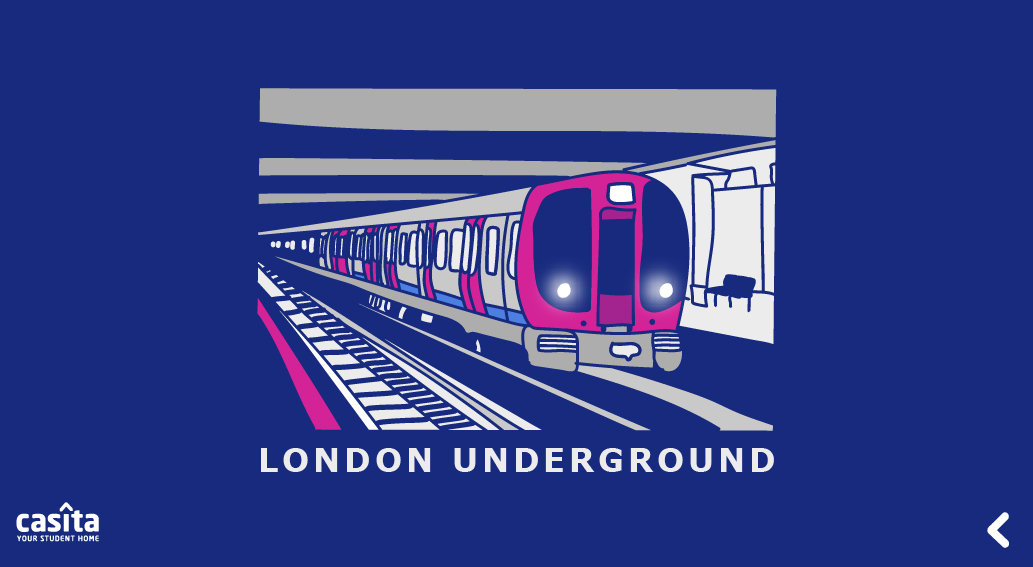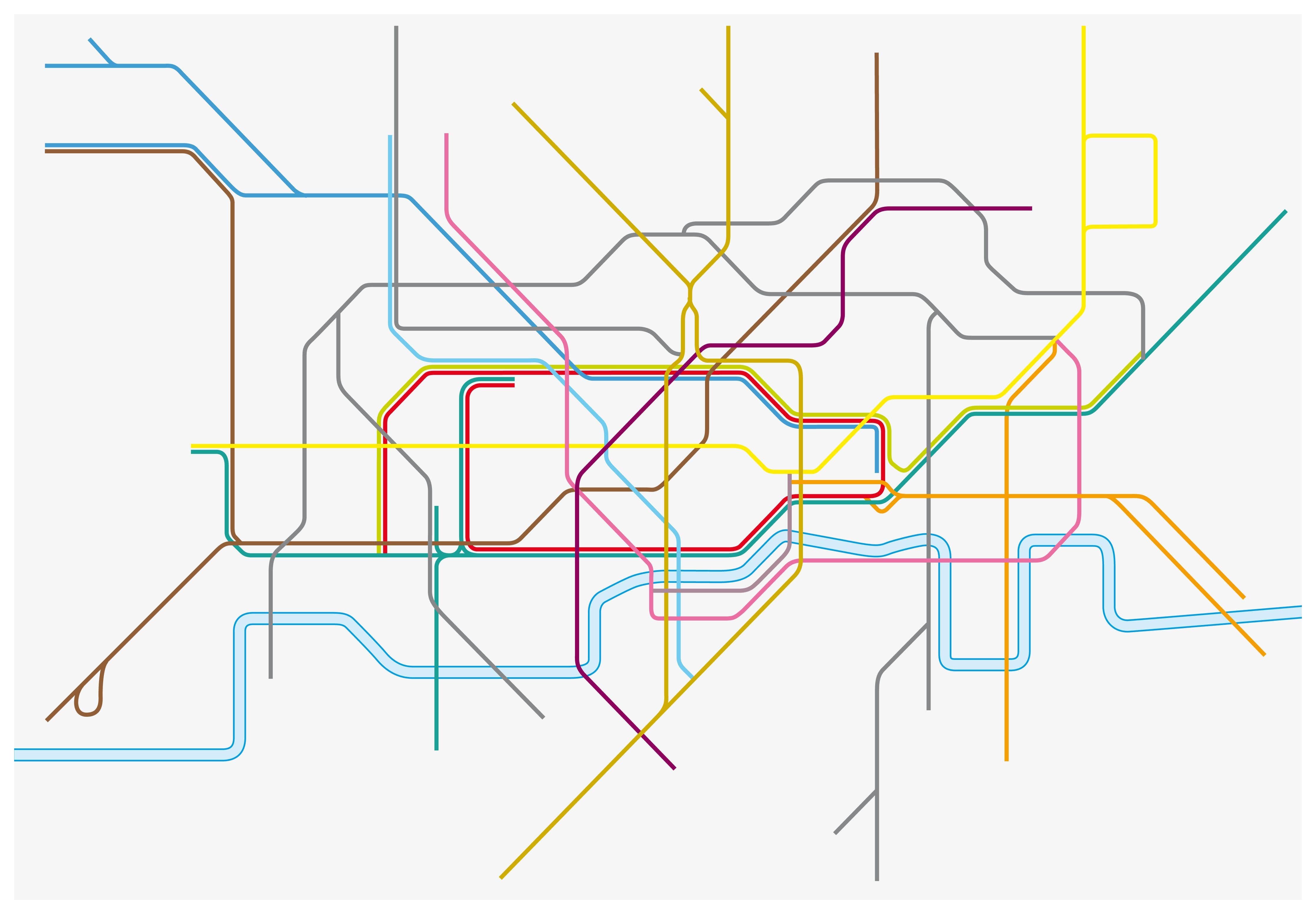How to Use London Underground
Tips and Advice
Exploring
6 mins read
Share

Updated at: 16 December, 2024
Published at: 21 February, 2023
By Reem Mohamed
How to Use London Underground
Tips and Advice
Exploring
6 mins read

Updated at: 16 December, 2024
Published at: 21 February, 2023
By Reem Mohamed
Share
London is a city whose reputation precedes it. As a renowned world capital, London has something for everyone! Whatever you’re into, whether it’s art, architecture, history, or entertainment, London is here to fit your interests. This, along with a warm and welcoming environment, a diverse population, and a multicultural community, make London a desirable destination for tourists, students, and everyone in between!
Navigating London can seem tricky and might come off as a bit of a hassle, especially to the outside eye. However, it is fairly easy to get around the city. With several means of transportation like the bus, the tram, London cabs, and the London Underground, you can make your way from one place to another with ease and convenience.
The London Underground, also known as the London tube, has been and continues to be one of the most used means of transportation in the city. It might come off as complicated and hard to use, however, it is fairly simple and will easily become your go-to mode of transport in London. Before we get into the tips and tricks of using the underground, let us first get acquainted with the London underground.
What is London Underground?
The London Underground, simply known as the Underground, or its more fondly known nickname, the Tube, is an underground railway system that runs in London. Having started operating back in 1863 as a metropolitan railway, the London Underground is the oldest underground railway in the world. The London tube system is divided into 12 lines, each one is assigned a colour. The underground runs through 272 stations, 14 of which are out of London.
.jpg)
How to Use London Underground?
Learning how to use the London tube is much easier than it seems. You just need to familiarise yourself with a couple of things, including routes, lines, payment methods, and peak hours. Here is our guide to using and maybe even becoming an expert in the London Underground!
1. Learn Your Routes
As a first-time user of the London Underground, you will need to learn your daily routes to avoid confusion. The London tube has 12 lines and 272 stations, so it might get confusing for you which one goes where. Keeping a map with you, either physically or on your phone, will help you in your first few visits to the Tube. You can also ask people there for help, whether they’re fellow passengers or station workers. Before you know it, you’ll be an expert in the London Underground and would be the one people ask for advice on the Tube!
2. Choose a Payment Method
Considering that you’re new to the London Underground and are not yet familiar with the way it works, including how to get your tickets and what payment methods are available, let’s get you acquainted with the different ways through which you can get a Tube ticket. You can either get a paper ticket or pay through a contactless credit card or via one of two cards: the Oyster Card or a travel card. Let’s delve into each payment method individually so you can choose the most fitting one!
Paper Ticket
A paper ticket is always an option when you are in a hurry or do not have one of the cards on your person. It is, however, a slightly more expensive option than the rest. You can use this fare calculator to know how much your trip is expected to cost to be prepared in advance.
Oyster Card
This is a smart-card mode of payment to travel in public transportation in London. An Oyster card can be used for the Tube, London buses, the London Overground, and some riverboat services. An Oyster card is for pay-as-you-go transactions and is the preferred mode of payment for most people in London. Rides with an oyster card are considerably cheaper than a paper ticket. This card is also very easy to use; you can recharge your card online via a credit card or at one of the many machines at the station.

Travel Card
A travel card in London is zone-specific; it works for specific zones in the city. It gives you unlimited travel at any time on both the Tube and the bus. You can use Travelcard at a flare rate for a particular period, for one day, a week, one month, or a year.
You can also get a day travel card for unlimited rides in a day. Travelcard may seem like a nice idea for tourists, but it is only economical if you plan to travel more than three times per day or outside Zones 1 and 2, which makes it a good fit for you as a student in the city. Just keep in mind that there are daily caps.
-min.jpg)
3. Get Accustomed to Operation Hours
London Underground’s operation hours are from 5 am to around midnight from Monday to Saturday, while Sundays have changing timings so you should check the updated timings beforehand.
4. Avoid Travelling during Peak Hours
As one of the most used modes of transportation in a busy city like London, it is important to note that the tube is often extremely crowded. This is why it’s important to avoid the London Underground during peak and rush hours so you are not crushed by other passengers and can even stand a chance to find a place to sit.
5. Ask for Help When Needed
Being a first-timer on the tube or taking the London Underground for the first few weeks can be confusing or intimidating. There are many knowledgeable stewards and other employees that are eager to help you and answer whatever questions you might have. Ask them for help if you get stranded or lost or you don’t know where to go and how; they will always be there to offer assistance and guidance.
6. Enlist the Help of Travel Apps
As confusing as it is to travel via the London Underground, it can become so much simpler using some of these useful city navigation applications.
CityMaps2Go
This application provides a detailed map of London with all the notable landmarks, restaurants, museums, and much more marked there. This app is extremely helpful if you are ever down in the London Underground.
Tube Map- London Underground App
This app is designed to work offline and helps by giving you a detailed rundown of the simplest and quickest route to your destination. This application is also fitted with a night mode which you can use to find your way home if it is too late for the regular service.

7. Extra Tips to Follow
As a new face on the London tube, you might still not get the hang of everything, so here are a few extra things to consider when using the London Underground.
Stick to the left when walking.
On the escalators, stick to the right when standing and pass from the left.
Keep your Oyster Card close for a smooth checking-in and checking-out process by the scanner.
Watch your wallet, luggage, and personal belongings to avoid pickpocketers on the Tube.
Always let the people on the train exit first and then get on the train.
Check the map before you ride and make sure to read it thoroughly as it might get confusing, especially for a first-timer.
Always stay behind the yellow lines.
Carry a book or have your earphones on hand so you can stay entertained on the train.
The London Underground is a city staple; it is the oldest underground railway in the world and is definitely a London landmark. Navigating the city is so much easier using the London Tube, and this guide should make navigating the Tube itself even easier. Wherever you’re staying in London, there is a tube station nearby that will get you to campus with ease and you can even use it to explore the city!
Frequently Asked Questions
1. Can I use the London Underground without an Oyster card?
Yes, you can use contactless pay via card, phone, or watch. You can also buy a paper ticket or use a travel card.
2. How much does it cost to use the underground in London?
Single tickets on the underground cost £280 with an Oyster card/contactless card, while the full cash fare is £6.70.
3. Is the London Underground 24 hours?
The typical operating hours for the London Underground are from 5 a.m. to midnight, with certain lines also offering nighttime service on Friday and Saturday.
4. Is the London Underground hard to use?
The London Underground has a confusing reputation in the city; it is both the most difficult and also the cheapest way to navigate the city. However, using this guide, you will definitely be able to use the London Underground with ease and convenience and get to your destination hassle-free.
5. Is London Tube safe at night?
The Tube is considerably the safest mode of transportation for you to take at night in London.
Tips and Advice
Exploring
By Reem Mohamed
Share
Tips and Advice
Exploring
Updated at:
Published at:
By Reem Mohamed
Share


